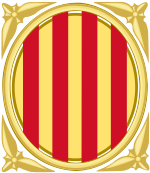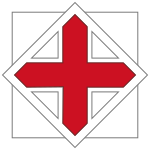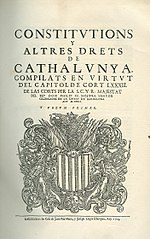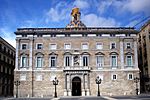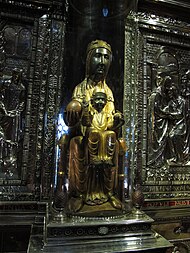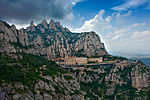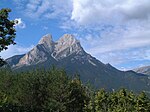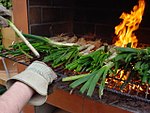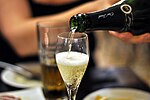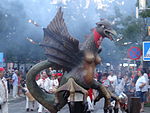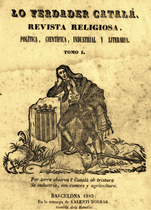
Catalonia is a historical European nation, currently administered as an autonomous community of Spain, designated as a nationality by its Statute of Autonomy. Most of its territory lies on the northeast of the Iberian Peninsula, to the south of the Pyrenees mountain range. Catalonia is administratively divided into four provinces or eight regions, which are in turn divided into 42 comarques. The capital and largest city, Barcelona, is the second-most populated municipality in Spain and the fifth-most populous urban area in the European Union.

Catalan cuisine is the cuisine from Catalonia. It may also refer to the shared cuisine of Northern Catalonia and Andorra, the second of which has a similar cuisine to that of the neighbouring Alt Urgell and Cerdanya comarques and which is often referred to as "Catalan mountain cuisine". It is considered a part of western Mediterranean cuisine.

Poblet Abbey, otherwise the Royal Abbey of Santa Maria de Poblet, is a Cistercian monastery, founded in 1151, located at the foot of the Prades Mountains, in the comarca of Conca de Barberà, in Catalonia (Spain). It was founded by Cistercian monks from France. The main architect was Arnau Bargués.

Lluís Domènech i Montaner was a Catalan architect who was very much involved in and influential for the Catalan Modernisme català, the Art Nouveau/Jugendstil movement. He was also a Catalan politician.
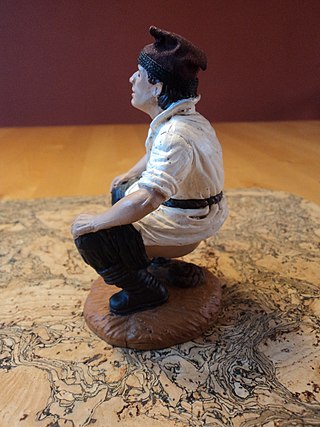
A Caganer is a figurine depicted in the act of defecation appearing in nativity scenes in Catalonia and neighbouring areas such as Andorra, Valencia, Balearic Islands, and Northern Catalonia. It is most popular and widespread in these areas, but can also be found in other areas of Spain (Murcia), Portugal, and Southern Italy (Naples).

Catalans are a Romance ethnic group native to Catalonia, who speak Catalan. The current official category of "Catalans" is that of the citizens of Catalonia, an autonomous community in Spain and the inhabitants of the Roussillon historical region in southern France, today the Pyrénées Orientales department, also called Northern Catalonia and Pays Catalan in French.

The Monastery of Santa Maria de Santes Creus, is a former Cistercian monastery in the municipality of Aiguamúrcia, Catalonia, Spain. The abbey was erected in the 12th century, in today's municipality of Aiguamúrcia, in the village of Santes Creus, in the province of Tarragona (Catalonia). However, it was in the thirteenth century when Peter III of Aragon expressed his desire to be buried in the monastery and a royal crypt was built for himself and his son, King James II that many of the local nobility established the custom to choose this place for burial. This led the monastery to increase in splendor and greatness thanks to the numerous donations received.
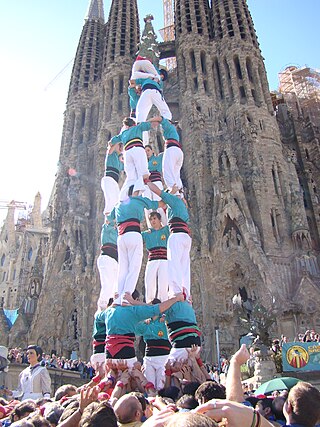
There are quite a number of festivals and traditions in Catalonia (Spain). While most are of ancient origin, certain traditions are of relatively recent introduction. There are also some that are common to the whole Catalan society, but others are relevant only to a particular location. Generally, locals welcome outsiders to share with them in their celebration.
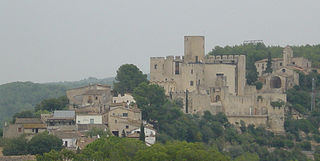
Castellet i la Gornal is a municipality in the comarca of the Alt Penedès in Catalonia, Spain. It is situated in the valley of the Foix river at the point where it crosses the Coastal Range. The river is dammed to form the Foix reservoir. The ajuntament is in La Gornal. The municipality is served by the N-340 road, and by a local road to Vilanova i la Geltrú.

The so-called Bars of Aragon, Royal sign of Aragon, Royal arms of Aragon, Four Bars, Red Bars or Coat of arms of the Crown of Aragon, which bear four red pallets on gold background, depicts the familiar coat of the Kings of Aragon. It differs from the flag because this latter instead uses bars. It is one of the oldest coats of arms in Europe dating back to a seal of Raymond Berengar IV, Count of Barcelona and Prince of Aragon, from 1150.
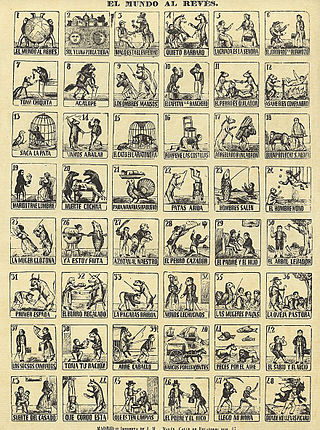
An auca is a genre of a story in pictures developed mainly in Catalonia.
Josep Abril i Virgili (1869-1918) was a self-taught Catalan poet and playwright. He specialized in the production of works with easily understood and popular moral lessons, which were publicised through Roman Catholic organizations.
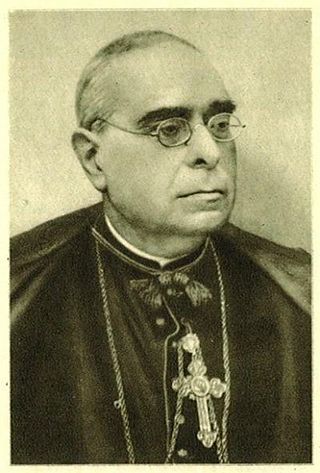
Josep Torras i Bages, born at Les Cabanyes, Alt Penedès, on 12 September 1846, died at Vic, Osona, on 7 February 1916, was a Catalan thinker, writer, and bishop. He was one of the main figures in the turn of the 20th century Catholic Catalan nationalism.
Seny is a form of ancestral Catalan wisdom or sensibleness. It involves well-pondered perception of situations, level-headedness, awareness, integrity, and right action: "a kind of refined good sense and self-realization."

Armand de Fluvià i Escorsa, is a Catalan genealogist and heraldist. He specializes in Catalan genealogies and in the dynasties of the counts of the Catalan Countries. He has also been a pioneer of the gay rights movement since the last years of the Francoist dictatorship. He was one of the founders of Nacionalistes d'Esquerra.

Joaquim Torra i Pla, known as Quim Torra, is a Catalan lawyer and journalist from Spain. He served as President of the Government of Catalonia from 17 May 2018 to 28 September 2020, when the Supreme Court of Spain confirmed a court ruling by the High Court of Justice of Catalonia condemning him for disobeying the Central Electoral Board during the April 2019 general election, leading to his disqualification from office.
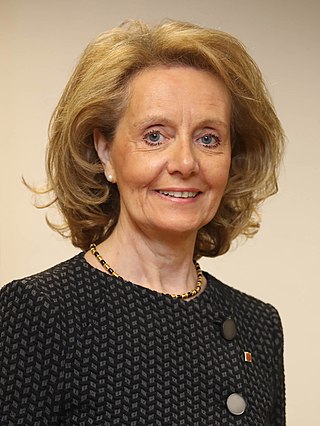
Mariàngela Vilallonga Vives has been a professor of Latin philology at the University of Girona between 1977 and 2022. Between 2017 and 2019 she was second vice-president of the Institute of Catalan Studies, an institution where she held several senior positions. On 25 March 2019 she became the minister of culture in the Quim Torra Government of the Generalitat de Catalunya. Her term as minister of culture ended on 3 September 2020.

Narcís Comadira i Moragriega is a Catalan poet, painter, playwright, translator, journalist and literary critic. His poetry is rather classical in nature, with a contemplative theme and a certain ironic point of view. As a painter, he understands his work as an extension of poetry. His first works show references to surrealism and pop culture, as well as his master Domènec Fita. In the late 70's he left the figurative painting to begin to represent nature and architecture, specializing in a very personal landscape and marked by realism, which in his latest work is leading to a synthesis of it, where fewer and fewer elements appear in his works.



